Info
Subfamily: Panicoideae
Genus etymology: Dichanthium = "paired flower" [Greek] refering to the difference between the basal homogamous and the other heterogamous spikelets
Species etymology: sericeum = "silken like" [Latin] refering to the hairs of the glumes
Photosynthetic type: C4 (warm season)
Nativity: naturalized - intentional
First recorded in Hawaiʻi: 1912
Map
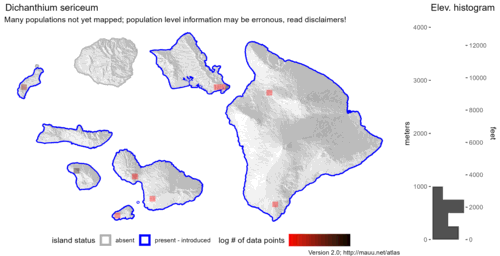
Inflorescence
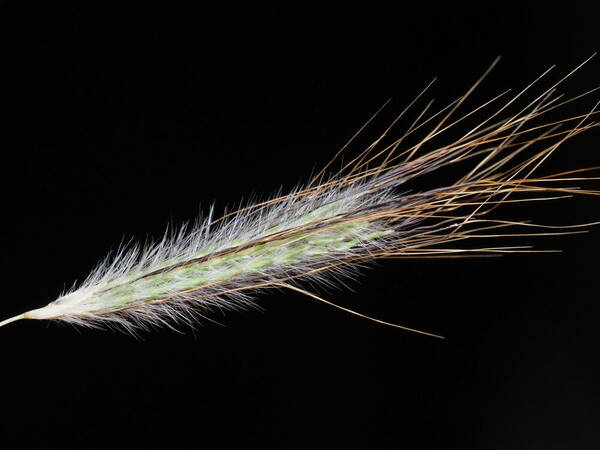
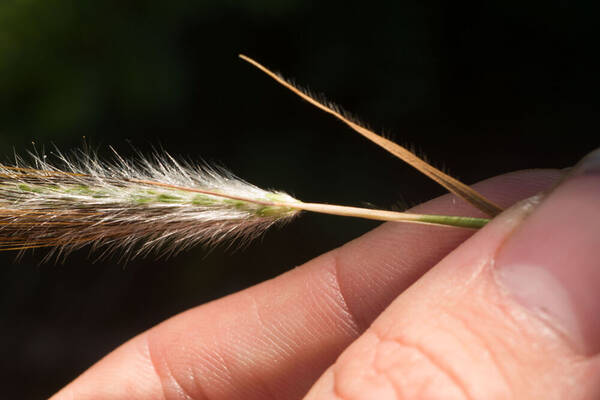
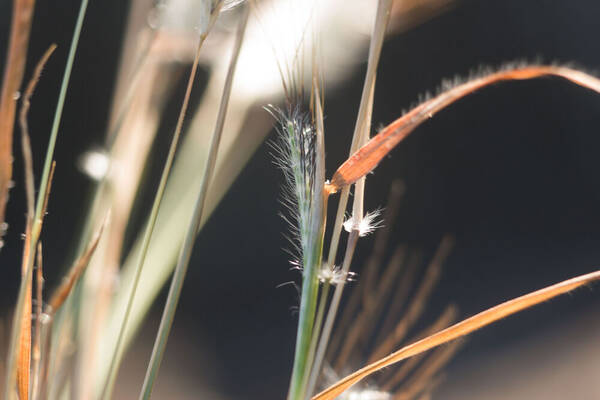
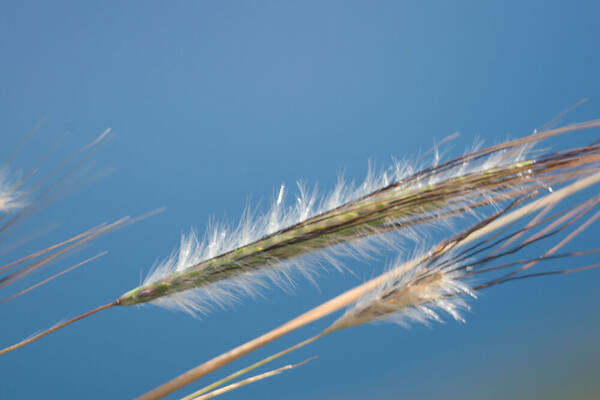
Spikelets
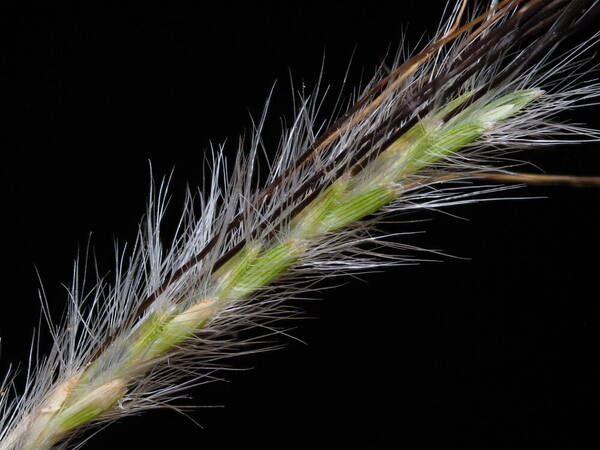
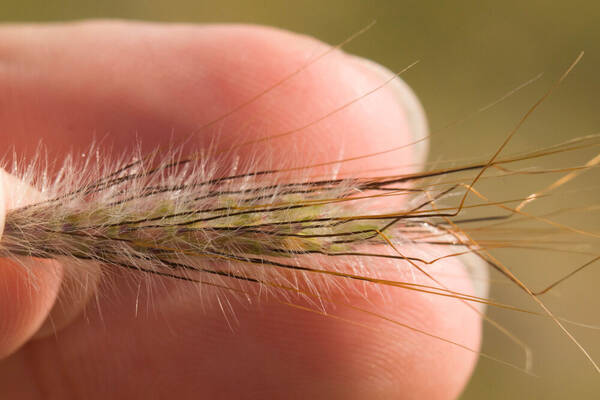
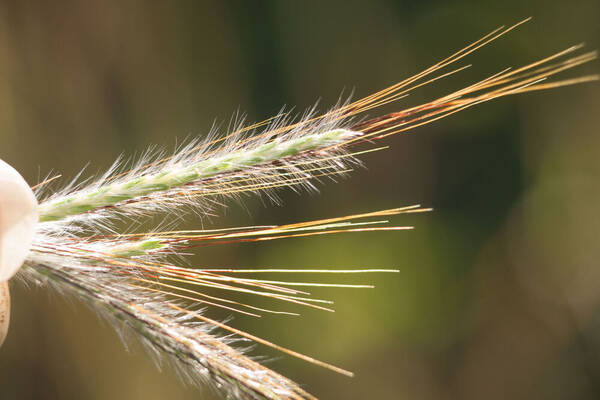
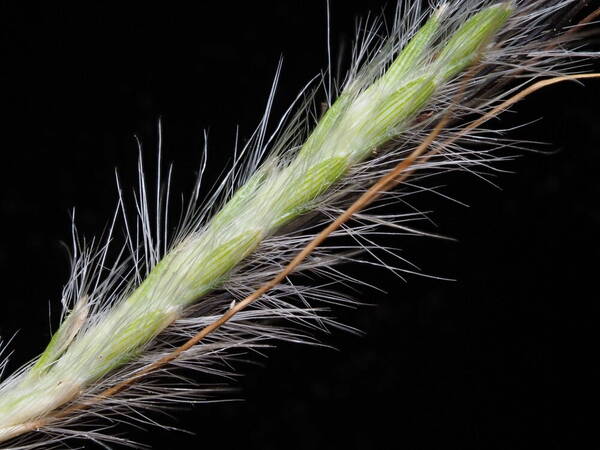
Node
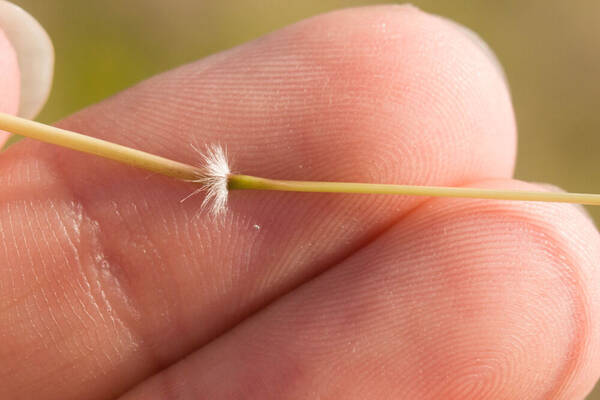
Description
Plants annual or perennial; tufted or cespitose. Culms 50-120 cm; nodes densely pilose, hairs about 2 mm. Sheaths with scattered papillose-based hairs; ligules 1-2 mm; blades 5-25 cm long, 2-5 mm wide. Rames 1-7, 3-7 cm, subdigitate, often glaucous and white-villous, spikelet-bearing to the base, basal spikelet pairs consisting only of glumes; internodes pubescent, hairs immediately below the nodes to 1.5 mm. Sessile bisexual spikelets 2.5-4.5 mm long, 1-1.4 mm wide; lower glumes 5-10-veined, with 0.7-1.5 mm hairs on the basal 1/2 and about 3 mm papillose-based hairs on the distal portion of the keels and in a transverse subapical arch; awns 2-3.5 cm, twice-geniculate. Pedicellate spikelets about 3 mm, usually sterile. 2n = 20.
(Description source: Barkworth, M.E., Capels, K.M., Long, S. & Piep, M.B. (eds.) 2003. Flora of North America, north of Mexico. Volume 25. Magnoliophyta: Commelinidae (in part): Poaceae, Part 2. Oxford University Press, New York. 783 pp http://floranorthamerica.org/Dichanthium_sericeum )
rect or somewhat decumbent at base, 50- 100 cm tall, silky pilose at nodes, otherwise glabrous. Sheaths 7-15 cm long, shorter than the internodes, striate, glabrous except toward the collar; ligule membranous, 2-3 mm long, lacerate; blades 15-45 cm long, 1529 2-6 mm wide, scaberulous and usually with a sparse tuft of long hairs at base, midrib conspicuous, apex attenuate. Inflorescences consisting of 2-5 racemes, digitately arranged, each one 3-6 cm long, peduncles slender, rachis silky pilose; sessile spikelet elliptic-oblong, first glume coriaceous, oblong-ovate, 3.5-4 mm long, 9-nerved, appressed pubescent on lower 1/4, with papillose-pilose hairs 2-3 mm long on margins of upper part and in a line across the top slightly below apex, apex obtuse or minutely bifid, second glume as long as first glume, subcoriaceous, with 3 converging nerves, keeled, glabrous or with a few long hairs at apex, margins ciliate, involute, apex truncate, erose, first lemma broadly ovate to lanceolate, ca. 2/3 as long as the glumes, hyaline, apex acute, second lemma 2.5-3 mm long, less than 0.2 mm wide, prolonged into a reddish brown, twisted, geniculate awn 2.5 cm long; pedicellate spikelet sterile, pedicel ca. 2 mm long, first glume subcoriaceous, cuneate, ca. 3 mm long, 9-nerved, with short appressed hairs at base and silky pubescent on margins and at apex, obtuse, second glume membranous, narrow, ca. 2.5 mm long, pilose on margins and at apex, truncate; palea absent. Caryopsis obovoid, ca. 2 mm long. [2n = 10, 20.]
(Description source: O’Connor, P.J. 1990. Poaceae, pp. 1481–1604. In: Wagner W.L., Herbst D.R. & Sohmer S.H. (eds.)., Manual of the flowering plant of Hawaiʻi. Vol. 2. University of Hawaii Press & Bishop Museum Press, Honolulu )